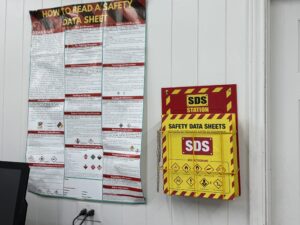We also offer
What Is Organizational Competency in Process Safety?
Organizational Competency in Process Safety refers to an organization’s ability to effectively manage the risks associated with hazardous operations—especially in high-risk industries like chemical manufacturing, oil and gas, and pharmaceuticals. It involves a combination of knowledge, skills, systems, and a safety-first culture across all levels of the organization.
More than just compliance, organizational competency ensures that process safety is deeply embedded in leadership decisions, workforce training, risk management systems, and continuous improvement efforts. This approach significantly reduces the likelihood of incidents like fires, explosions, and toxic chemical releases.
Why Is Organizational Competency Important?
Developing strong process safety competency is essential for:
-
Preventing major accidents and ensuring employee and public safety
-
Maintaining compliance with OSHA, EPA, and industry regulations
-
Building a resilient safety culture across all departments
-
Improving operational efficiency and reducing unplanned shutdowns
-
Protecting your company’s reputation and financial stability
Without proper competency, even well-designed systems can fail due to poor decision-making, miscommunication, or lack of awareness about process hazards.
Key Elements of Organizational Competency in Process Safety
1. Leadership Commitment
Top management must treat process safety as a core value—not just a legal obligation. This includes allocating resources, setting clear expectations, and leading by example.
2. Policy and Standards Development
Formal safety policies should be clearly documented, regularly updated, and accessible to all employees.
3. Risk Identification and Management
Conduct regular hazard assessments to identify, control, and mitigate risks. Use tools like HAZOP, LOPA, and Bowtie Analysis.
4. Training and Competency Development
Invest in process safety training for all staff levels. Include technical training, emergency drills, and lessons from past incidents.
5. Cultivating a Safety Culture
Encourage open communication, near-miss reporting, and employee involvement in safety improvements. Foster a no-blame environment where safety comes first.
6. Cross-Functional Collaboration
Establish safety teams that include representatives from operations, maintenance, engineering, and management to drive coordinated safety efforts.
7. Performance Measurement
Track leading and lagging indicators such as training completion, safety audits, incident rates, and PSM compliance.
8. Incident Investigation and Learning
Implement robust systems to report, investigate, and learn from incidents and near misses. Use root cause analysis to prevent recurrence.
9. Continuous Improvement
Regularly review and refine safety practices based on new data, evolving regulations, and technological advances.
10. Stakeholder Engagement
Involve employees, contractors, suppliers, and community members in your process safety strategy to build a stronger safety network.
Why You Need Organizational Competency in Process Safety
Organizational competency is a cornerstone of effective Process Safety Management (PSM). It enables companies to:
-
Reduce risk of catastrophic incidents
-
Ensure regulatory compliance and avoid costly penalties
-
Promote a proactive safety culture and stronger workforce morale
-
Improve decision-making at every level
-
Support long-term sustainability and community trust
Whether you’re operating a chemical plant, refinery, or pharmaceutical facility, having a competent organization helps you protect lives, assets, and the environment.
Why Choose Prime Process Safety Center
At Prime Process Safety Center, we specialize in helping organizations build and strengthen their process safety competencies.
What Sets Us Apart:
-
Expert Knowledge: Decades of experience in high-hazard industries
-
Tailored Solutions: Customized plans based on your specific risks and goals
-
Compliance Assurance: We help you meet OSHA, NFPA, and API standards
-
Safety Culture Development: We focus on behavioral change, not just systems
-
Comprehensive Training: Hands-on programs for staff at all levels
-
Continuous Support: Ongoing evaluation and improvement guidance
-
Incident Prevention & Learning: Proven methods to investigate and learn from failures
FAQ
1. What is Organizational Competency in Process Safety?
It refers to an organization's collective ability to effectively manage process safety risks, encompassing knowledge, skills, procedures, and cultural practices.
2. Why is Organizational Competency in Process Safety important?
It's essential for preventing industrial accidents, such as fires, explosions, and toxic releases, thereby ensuring the safety of employees, the environment, and the community.
3. How does Organizational Competency in Process Safety differ from individual competency?
While individual competency focuses on personal skills and knowledge, organizational competency involves the collective capabilities and systems that govern how an organization manages process safety.
4. What are the key components of Organizational Competency in Process Safety?
These include leadership commitment, risk management, employee training and involvement, safety culture, emergency preparedness, and continuous improvement practices.
5. How can an organization develop its competency in process safety?
By investing in employee training, implementing robust process safety management systems, fostering a strong safety culture, and regularly reviewing and improving safety practices.
6. What role does leadership play in enhancing Organizational Competency in Process Safety?
Leadership plays a crucial role by setting safety as a core value, providing resources, and actively engaging in and endorsing safety initiatives.
7. How do training and development contribute to Organizational Competency in Process Safety?
Training ensures that employees at all levels understand process safety risks and their role in mitigating these risks, contributing to a knowledgeable and safety-conscious workforce.
8. What is the significance of a safety culture in Organizational Competency in Process Safety?
A strong safety culture promotes shared responsibility for safety, encourages reporting of safety concerns, and facilitates open communication, crucial for effective process safety management.
9. How is compliance with process safety regulations ensured?
Compliance is ensured through regular audits, adherence to industry standards and legal requirements, and implementing effective process safety management systems.














